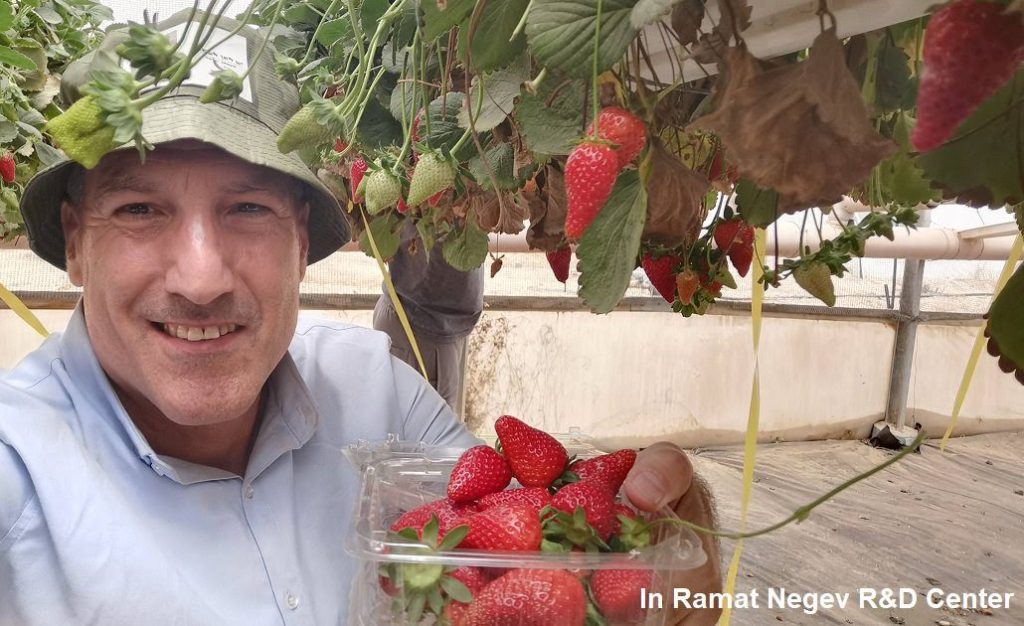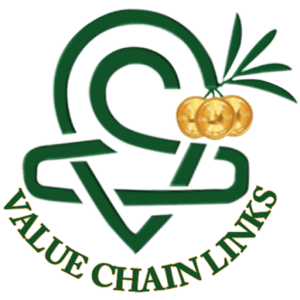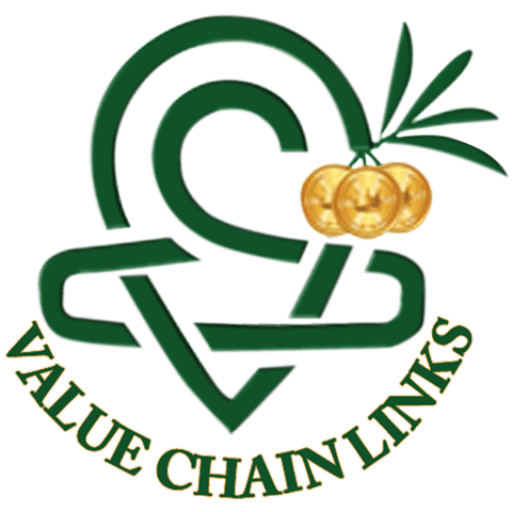“WISDOM OF THE MASSES”: I’M ASKING FOR YOUR ADVICE ON THE DREAM VALLEY MODEL

by Dr. Nimrod
I have been publishing a weekly column on agriculture in emerging economies, technology, and business for the last six years.
I have shared the endeavors I’m involved in with you in great detail. Those include various aspects of the challenges ahead and the way to address those.
Still, one of the most common questions is, “Yeah, I read your weekly column and the daily posts on LinkedIn. I feel connected and love the messages in them. BUT it’s still hard for me to understand how this whole Dream Valley idea or concept or implementation works together for me?“
This column I dedicate to those who asked that question or had it in mind but hesitated to ask.
However, to know that I have managed to fulfill the above task properly, I’m asking you to provide me (at the end) with your feedback.
Although intuitive, it is still important to emphasize that each country, region, and crop faces different challenges and requires a different tailor-made set of solutions.
Hence the description below is a general description of a concept. As you will see, to apply it, there is a need for a dedicated tailor-made solution per the program’s initial challenges, situation, and aimed goals.
I wish you pleasant reading and look forward to getting your comments and input.
The Concept: Dream Valley National Export Program
THE PROBLEM
Did you know that 152 countries are defined as “developing” and another 23 are defined as “emerging“?
Did you know that by 2030, 97% of the growth – increase in the world population will come from these countries?
Underdeveloped agro sector, little export, shortage in foreign currency, national economic stress, etc., are some of the fundamental NATIONAL and LEADERSHIP problems. Those are NOT the farmers’ problems (as many wrongly consider it).
THE RESULT
These countries suffer from chronic problems, including, among others:
Poverty, hunger, malnutrition, violence, illiteracy, gender inequality, shorter life expectancy, and morbidity from “poverty diseases” (malaria, intestinal diseases, etc.).
In addition, an undeveloped agro sector contributes to accelerated urbanization, which has its many downsides and is considered an additional heavy burden on the national economy.
This creates a constant state of constraints that makes it difficult for a sustainable economy and business to grow.
Undeveloped countries find themselves “net importers of food” even though tens of percent of the labor force earn their living from agriculture.
WHAT HAS BEEN DONE TILL TODAY?
The world’s current problem-solving attitude to the above ongoing failure is to provide the non-developed countries with funds.
They do it through subsidies, loans, donations, etc., and then… expect and hope for good results, which never arrive!.
Furthermore, developed countries are even ready to finance endless NGOs to do the job they have failed to achieve.
Unfortunately, decades come and go, but we don’t see, and the farmers don’t experience any dramatic positive change.
The donating organizations and countries can conveniently release themselves from moral responsibility for the outcome by saying –
“We did the maximum possible. Our conscience is clean. We did whatever we could and was possible. The problem is in the receiving country. The problem is with the local government/experts/farmers, the market, the education, the ….”
AGRA – Alliance for a Green Revolution in Africa is a perfect example of this situation and attitude.
AGRA invested tens of $ billions in providing tens of millions of sub-Saharan African smallholders generous subsidies, access to fertilizers, seeds, mechanization, consulting, etc.
However, 15 (!) years later, most farmers/countries under the AGRA project are not doing better than those who are not.
Decades passed, the number of farmers in poverty kept growing, and the problem even escalated. More of the same doesn’t seem to be the answer we are looking for.
SO WHAT ARE WE DOING?
Continuing to walk the same path (again) is worthless and hopeless.
At the same time, we understand that non-developed countries can’t have rapid economic growth before pulling the agro sector out of poverty and turning it into a highly productive and business-oriented industry.
In other words, the challenge for countries with a sizeable agro sector is HOW TO TURN AN UNDEVELOPED AGRO SECTOR INTO A PROFITABLE BUSINESS-ORIENTED AGRO-INDUSTRY.
CHANGE OF DIRECTION
As demonstrated by the AGRA example, the problem is not in the absence of resources, such as technology, financing, land, workforce, sunlight, and water.
Not even in the markets’ readiness to buy and pay for the crops, as market demand is enormous and keeps growing (this explains why African and Asian countries import so much food).
Yet, there is an urgent need for a change of approach at the national level, including an INTERNAL STRUCTURAL AND OPERATIONAL shift in concept and doing things.
THE EPIPHANY
I was fortunate to be the founder and the CEO of Biofeed. This company reinvented eco-friendly crop protection with highly efficient non-spray 21st-century innovative solutions to global pest challenges – field-proven technology & protocols.
In this role, and previously as an academic researcher and a farmer myself, I was privileged to learn those points of view and the challenges professionals and smallholder farmers face.
In addition, I closely studied and learned about the other value chain stakeholders, i.e., governments, goods/service providers, traders, and consumers.
Thanks to this close acquaintance with all value chain stakeholders, and genuine caring for UN SDGs, I was blessed with the following insight–
The main challenge of non-developed economies with a sizeable agro sector is NOT the lack of access to agro-technology or funds BUT the inability to continuously increase farmers’ profit per hectare.
I then recognized that the root problem on the way to increasing the profit per hectare has nothing to do with technology but a pure result of using inappropriate business models.
Current business models in use are perfect for farmers in developed economies but not for those in the early stage of development in non-developed countries.
Due to inappropriate business models, nations and their entire agro sector remain stuck in the same place, limited, with no growth ability.
Until they change the business models, non-developed countries are doomed to painfully slow growth (if at all) of their agro sector.
Because of this, even when we pour into it lots of funds, subsidies, technologies, training, etc., there is a minor (if any) impact on farmers’ livelihood.
The outcome is; that we don’t see the expected agro sector (fast) economic development and growth.
Yet, when things don’t work as expected, we faulty blame (again) the farmers for our failure and their poverty. Could it be more unfair and useless than that?
HISTORICAL CHANGE IN APPROACHING THE “MARKET FAILURE.”
First, we should stop addressing the challenge of developing and emerging economies as “a problem of insufficient technology or funds for farmers.”
Today, even poor farmers have access to more money and technology than my parents and other farmers could dream of only 80 years ago.
We can bring the desired CHANGE in a relatively short period through Disruptive Innovation, as coined and defined by Prof. Clayton Christensen.
Regardless of the industry, Disruptive Innovation contains and requires:
(I) AN INNOVATIVE BUSINESS MODEL
(II) ENABLING TECHNOLOGY
(III) A COHERENT VALUE NETWORK
DISRUPTIVE INNOVATION AT THE NATIONAL LEVEL
Dream Valley (DV) is designed to fulfill the above three requirements.
(I) DV’s novel approach and business model address the agro sector challenges of non-developed economies.
(II) DV brings A Package of state-of-the-art technology and services solutions, and on top of it, it uses Biofeed’s breaking through eco-friendly non-spray technology. The comprehensive set of tools enables farmers to produce more and higher quality produce without increasing costs or labor.
All technologies and services used by DV’s farmers are field-tested and in use.
(III) DV’s overall concept is an inclusive business-oriented model incorporating all value chain parties. That includes technology and service providers, R&D, farmers, packaging, logistics, traders, buyers, and consumers.

Dream Valley is short for the Dream Valley National Export Program (DVNEP).
Dream Valley began as a spin-off of Biofeed after I learned and understood that in addition to top technological solutions, there is an urgent need for a complete trading platform that would bring a fresh, novel concept and business model like never been done.
Hence, Dream Valley connects farmers with consumers, as Amazon connects SMEs with clients, but DV also supports its farmers to
(1) Increase their yield and its quality.
(2) Marketing the produce to premium markets.
Because Dream Valley wishes to be “the Amazon of agriculture” for farmers in non-developed economies, it introduces the required adjustments, which are far more challenging and different than copying a digital platform, i.e., Amazon.
Dream Valley is designed to operate at the NATIONAL LEVEL as part of long-term national programs.
It directly targets the fundamental problem of the agro sector in those non-developed economies, which is the use of an inappropriate (not suitable) business model.
A DISRUPTIVE BUSINESS MODEL
Inspired by the successful Israeli agro-business model, Dream Valley is based on a state-of-the-art, a tailor-made business model designed explicitly for non-developed economies.
Israel’s agro sector has flourished for 74 years, thanks to the unique business model and the ecosystem it developed.
This is the secret of the Israeli “agriculture miracle,” which began in the early 20th Century and, within a short while, became the young country’s economic engine, paving the road for Israel’s future financial success.
WHAT MAKES THE DREAM VALLEY BUSINESS MODEL UNIQUE?
Let’s be clear; Dream Valley does not offer any “magic solutions,” a point solution, or a technology that overnight will make a poor farmer rich.
Dream Valley offers a national long-term system-approach solution based on the solid foundations of –
1. Export – transform the existing agriculture into an advanced, high-value, export-oriented agro-industry with a built-in trade-marketing platform.
2. Ecosystem – creating an advanced agro-ecosystem, with all stakeholders working in cooperation, including; farmers, the private sector, scientists, professionals, and government.
3. Sharing – establishing a strategic partnership between the private and the public sectors, where the private sector implements the government vision and goals.
Dream Valley does this thanks to its unique inclusive model, which takes into consideration all aspects of the agro value chain –
Operational – unique model of doing business.
Scientific – technology to increase the value per hectare, i.e., produce quantity and quality.
Marketing – addressing specific premium market needs, with emphasis on export markets.
Financing – by the value chain partners.
The overall Dream Valley model is designed to transform the national agro sector into a significant contributor to the national economy and a global leading agro-industry.

DREAM VALLEY (DV) MODEL ADVANTAGES
Based on the solid and proven foundations of the Israeli Model. In the past six years, the DV model has been adjusted for the current needs of non-developed countries.
DV is committed to long-term, sustainable change based on SDG values and principles.
DV provides a complete End-to-End Package (including the production phase), from goods/service suppliers to farmers to marketing the produce to premium markets.
DV is backed by a team of experts from Israel and elsewhere.
DV emphasizes the creation of financial added value, matching premium market demands.
DV reduces the business risk for stakeholders and partners, including the government, farmers, traders, importers, and investors.
DV uses a novel uniform index to measure its success – profit per hectare. (Not to confuse with indexes such as yield, price/kg, etc.)
DV manages the entire value chain activity and process.
DV introduces and subsidizes state-of-the-art technologies and services, where payment for those is mainly based on future income from the produce sales to the consumer.
DV model provides an alliance of interest; when financial results are better, all profit, and vice-versa.
DV opens the door to bi-national projects and investors that would get involved thanks to its professional, trusted management.
THE RESULT WOULD BE
Turning the agro sector from “poor and needy” to a significant national economic contributing engine.
Increasing local food security.
Eliminating poverty from the agro sector.
Enable better education for the future (next) generations.
Strengthening the national economy.
Increased agro production and exports.
Building a complete value chain and infrastructure, including – scientific, marketing, logistical, business, and professional.
Building Agriculture Centers of Excellence.
Introducing and applying advanced standards.
Significantly increase in farmers’ income per hectare.
Increased foreign currency flows into the country.
Improving the country’s public image.
Increasing national pride.
If you got all the way here, please take a look at the questions and share your thoughts with me. You are also welcome to add remarks to other issues I didn’t ask about.
| YOUR FEEDBACK PLEASEBelow are guiding questions. However, please fill free to share your thoughts and ideas beyond those.Do you think you understand Dream Valley outline? Yes / No / OTHER_____________Does it appeal to you? Yes / No / OTHER_____________Does the way it is configured seem right to you? Yes / No / OTHER_____________Would you like your country to use DV? Yes / No / OTHER (name of country) _____________Would you like to be part of DV? Yes / No / OTHER (in what role) _____________If you like to be part of DV, what part would you like? Farmer / Government contact / Local business partner / Exporter / Importer / Trader / Investor / Other ______________Would you advice a friend or a decision maker to be part of DV? Yes / No / OTHER (name of country) _____________In what crops would you like to see DV involved? Yes / No / OTHER (crops?) _____________Would you add or deduct parts to/from DV? Yes / No / OTHER_____________Other Comment / Opinion / Suggestion _________________ Anyone submitting feedback would receive from me a copy of the updated plan after incorporating all remarks. I appreciate your contribution. |
| TAKEAWAYS» THE STATE OF THE AGRO SECTOR and its development is the responsibility of the country’s government.» THE LACK OF TECHNOLOGY AND FUNDING is not the primary cause of poverty.» DISRUPTIVE INNOVATION, first and foremost the use of innovative business models, will accelerate the agro sector development, making it a global leader.» DREAM VALLEY is a holistic dedicated tailor-made business model designed to facilitate the national agro sector leapfrog, as Israel did. |
| If you enjoyed the article please share it with friends & colleagues. |

